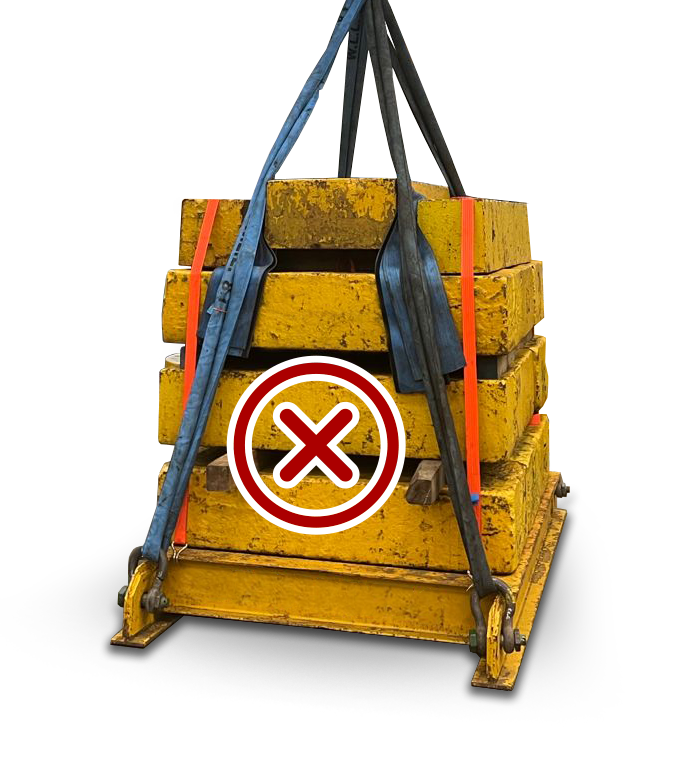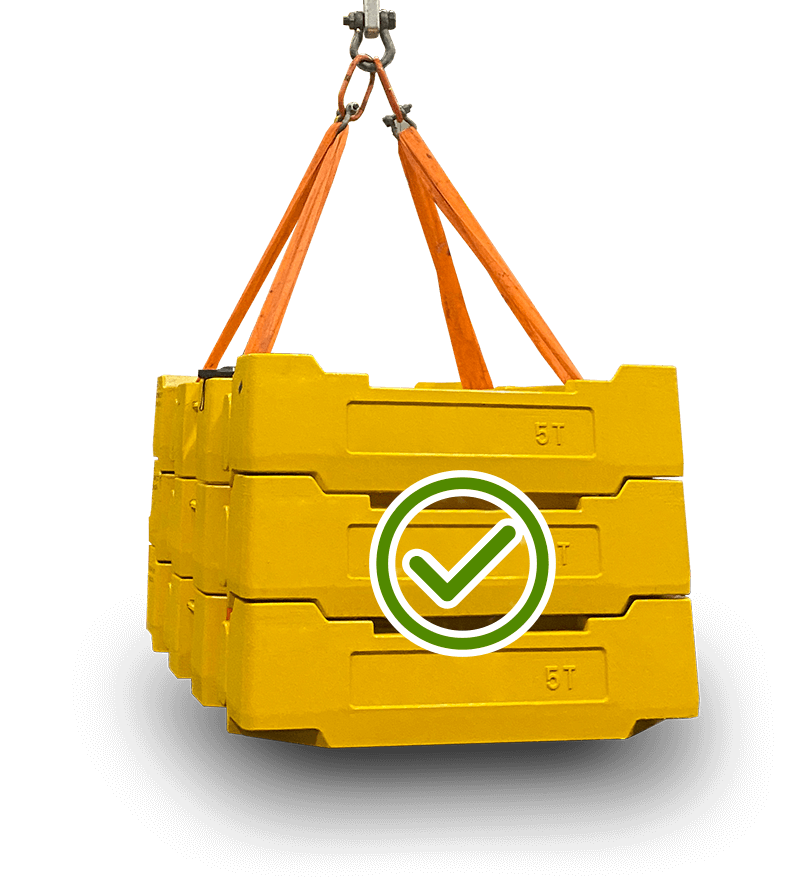Load testing is a well-established method of verification of the load bearing capability of structures and equipment. The requirement for testing and the method employed is usually dictated by the standard the equipment is designed to and the policies of the company responsible for the design or the end user.
One of the most technically rigorous methods of testing involves the use of test weights, arranged to replicate the in-service loads as closely as possible. The use of test weights is particularly useful when the system being tested requires the load to be mobile. In addition, some of the Classification Societies mandate that test weights are used for equipment made to certain standards (mainly for use in the offshore and marine sectors).
Common pitfalls of using test weights:
Historically the most important feature of test weights was their mass – little consideration was given to other features that made the testing process easier and safer. As such weights tended to be repurposed equipment – everything from steel pin tabletops to old concrete blocks are regularly used. The same is true for the test weight cradles that are utilised to lift multiple test weights for higher load tests – most are repurposed steel frames with an unknown history.
Most of the pitfalls are as a result of fundamental design flaws – some of these are highlighted below.
- Weights are difficult to handle & assemble.
- Often weights have no dedicated lift points or inaccessible lift points.
- Weights supplied with no instructions or lift plan.
- With the variety of weights sizes provided it is difficult to produce drawings or plans for use on site.
- Weights liable to damage rigging with features like sharp or rough corners.
- Weights are difficult to secure.
- Often there is a high reliance on lashing rather than a more positive method of securing. Cargo lashing straps are often more for show than being effective in stopping a stack of sliding steel weights.


- Poor documentation supplied with test weight cradles with safe capacity based on experience rather than science.
- Poor design of test weight cradle pad eyes
- A common failing in the design of test weight cradles is their lifting eyes – often they are configured so they are not aligned with the applied force and are side loaded when in use.
- Poor marking or lifting / lashing points.
- Difficult to adjust weight & centre of gravity.
Test-weights.co.uk have looked to overcome these issues by providing a system of interlocking cast iron test weights along with a range of purpose designed and certified test weight cradles. The system comprises of a recessed 5Te weight that can accept up to 4 off 1Te weights giving an assembly weight of 9Te.
View our test weights in action on the gallery page or contact us today to discuss your hire requirements.
